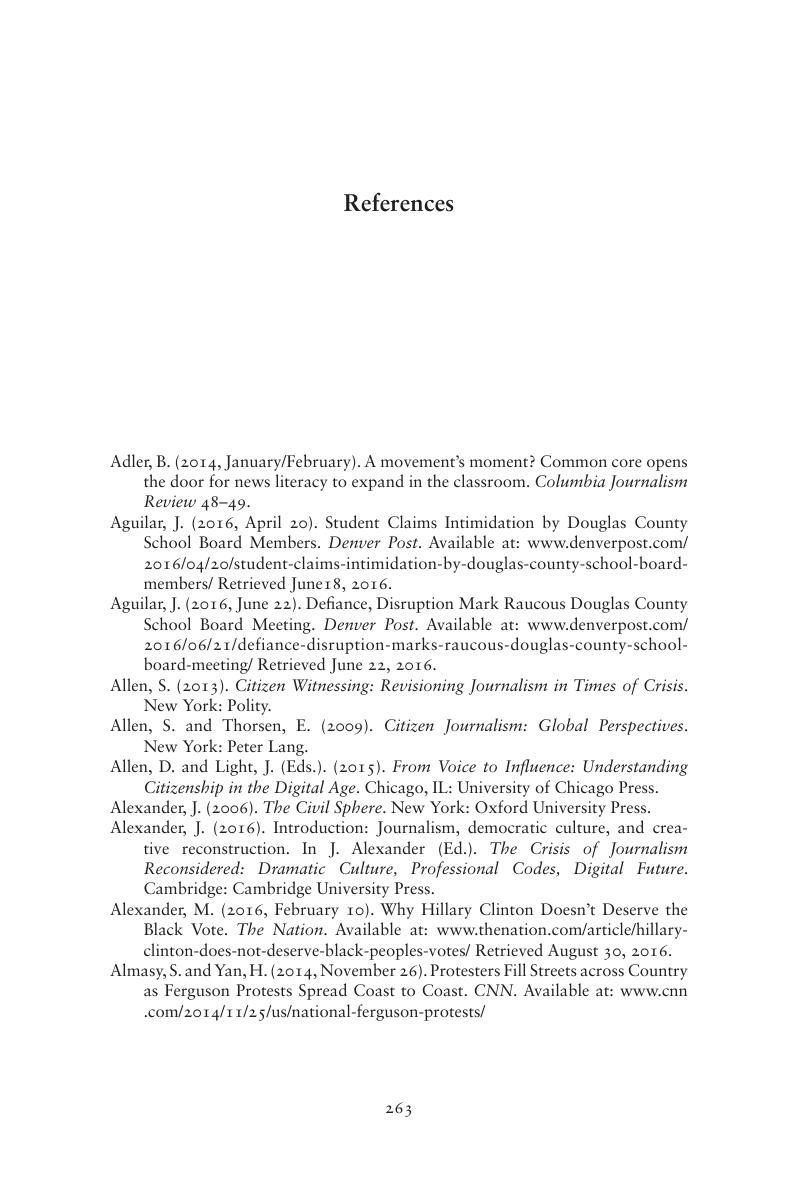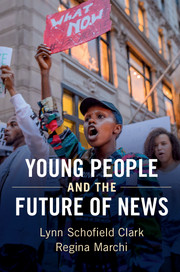Book contents
- Young People and the Future of News
- communication, society and politics
- Young People and the Future of News
- Copyright page
- Contents
- Acknowledgments
- Introduction
- 1 Young People, Journalism, and Politics
- 2 Connective Journalism
- 3 Hope and Disillusionment with Legacy News
- 4 Young People “Produsing” and Consuming News
- 5 Connective Journalism and the Formation of Youthful Publics and Counterpublics
- 6 Youth Citizen Journalism
- 7 Moving Forward
- Methods Appendix
- Notes
- References
- Index
- Series page
- References
References
Published online by Cambridge University Press: 14 September 2017
- Young People and the Future of News
- communication, society and politics
- Young People and the Future of News
- Copyright page
- Contents
- Acknowledgments
- Introduction
- 1 Young People, Journalism, and Politics
- 2 Connective Journalism
- 3 Hope and Disillusionment with Legacy News
- 4 Young People “Produsing” and Consuming News
- 5 Connective Journalism and the Formation of Youthful Publics and Counterpublics
- 6 Youth Citizen Journalism
- 7 Moving Forward
- Methods Appendix
- Notes
- References
- Index
- Series page
- References
Summary

- Type
- Chapter
- Information
- Young People and the Future of NewsSocial Media and the Rise of Connective Journalism, pp. 263 - 291Publisher: Cambridge University PressPrint publication year: 2017



